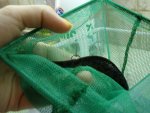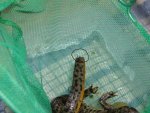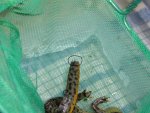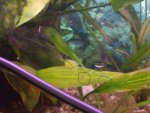mortisia
New member
Hi,
I have my spanish ribbed newt for 4 years now with no problems before and suddenly today I checked him and saw that his tail is like eaten at the end, and there are 2 small pieces missing on top of his fin...He doesn't have a tankmate, he is alone in the tank.
I hope the photos will help...
I really need your help because I dont' know what to do and I'm afraid that something will happen to him...
Thank you very much
Emmanouela
I have my spanish ribbed newt for 4 years now with no problems before and suddenly today I checked him and saw that his tail is like eaten at the end, and there are 2 small pieces missing on top of his fin...He doesn't have a tankmate, he is alone in the tank.
I hope the photos will help...
I really need your help because I dont' know what to do and I'm afraid that something will happen to him...
Thank you very much
Emmanouela




